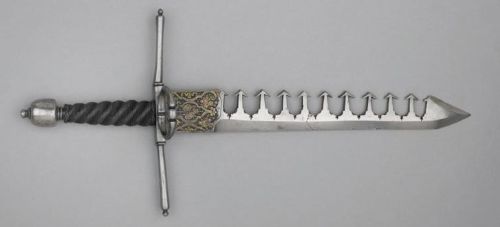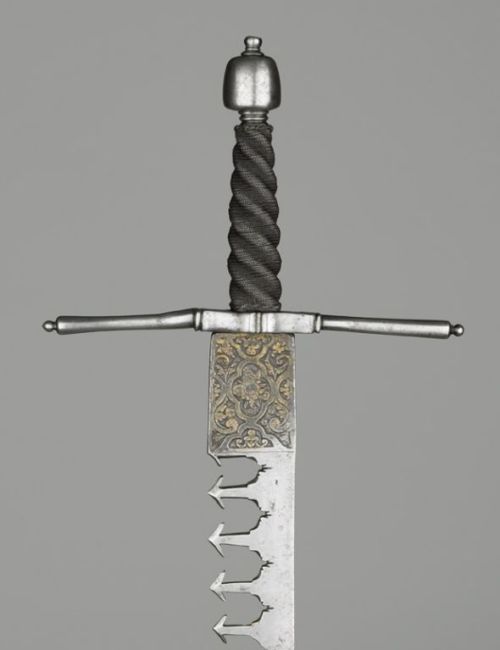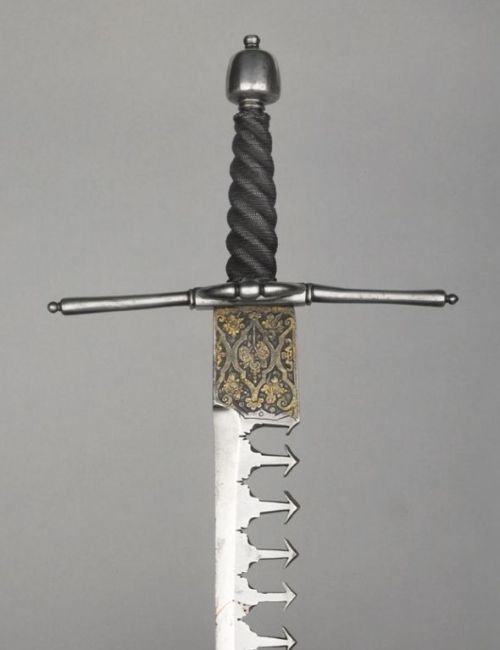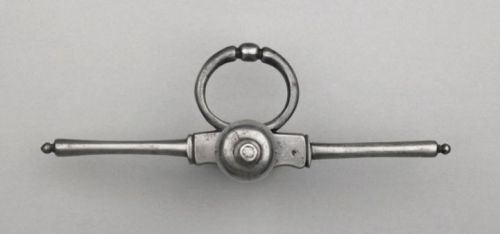art-of-swords:Sword-Catching Parrying DaggerDated: 1600Culture: ItalianMedium and techniques: iron o
art-of-swords:Sword-Catching Parrying DaggerDated: 1600Culture: ItalianMedium and techniques: iron or steel and gold, chiselled, gilded and bluedMeasurements: overall length 50.7 cm; blade length 35.4 cm; width 4.4 cm; weight 0.81 kg; width 22.4 cm; balance point 3.3 cmThis unusual fencing dagger demonstrates the way in which the artistic qualities of a weapon could be influenced by the practical concerns of the swordsman. The Renaissance duel was usually fought with rapier and dagger. The rapier, as the main weapon of attack, was complemented by a parrying dagger held in the left hand, used primarily for defensive movements.However, by 1600 fighting with the rapier alone was becoming the latest fashion. The opposing blade could still be parried or beaten away with the left hand. The free left also allowed the duellist to grab hold of his enemy’s swordblade, temporarily immobilising it to expose him to a lethal counter-thrust. This distinctive fencing weapon is designed to provide the blade-grabbing ability of the free left hand, while retaining the dagger for defensive action. The arrow-like barbs allowed a sword blade to enter the ‘jaw’ of the dagger, but made it difficult to free it again. With his weapon ensnared, the enemy was exposed, if only for an instant.The practical challenges of creating such a specialised weapon were considerable. The hardened and tempered steel blade had to be carefully cut with the series of dramatically barbed teeth, a laborious process. The spaces between the teeth have been elegantly filed with ornamental edges, while the base of the blade has been finely etched and gilt- an unusual feature, even for high-quality weapons. In this way, despite its very specific function as a fighting tool, the weapon’s artistic merit is evident.Source: Copyright © 2016 The Wallace Collection -- source link
Tumblr Blog : art-of-swords-deactivated201705.tumblr.com
#hngh#sara look





